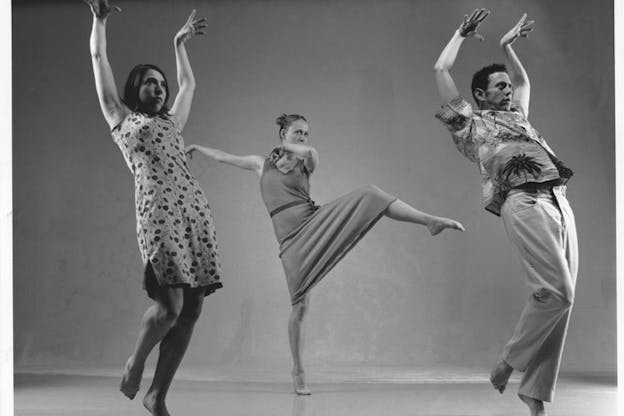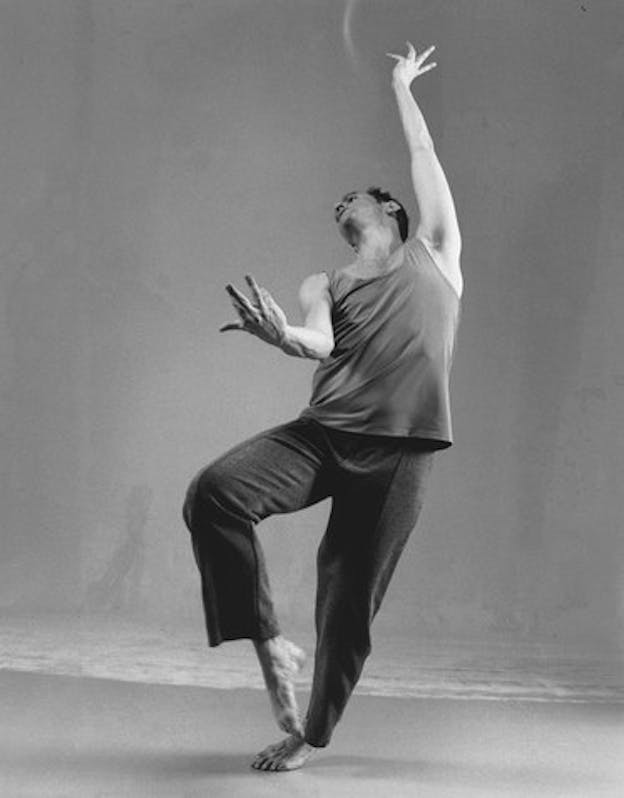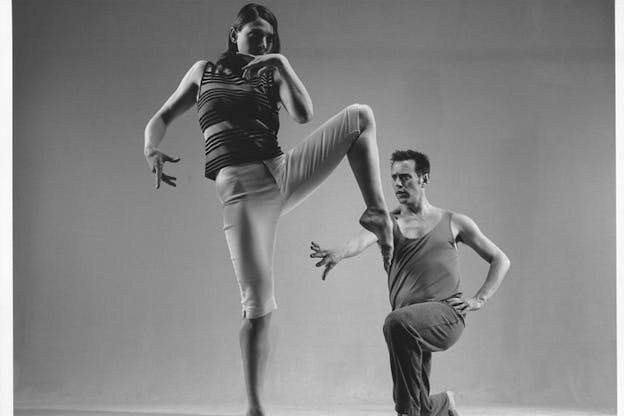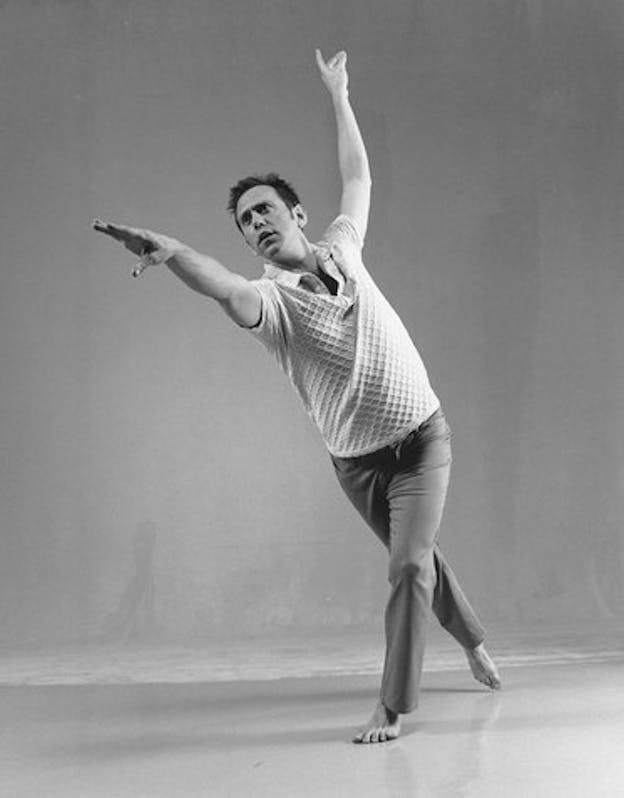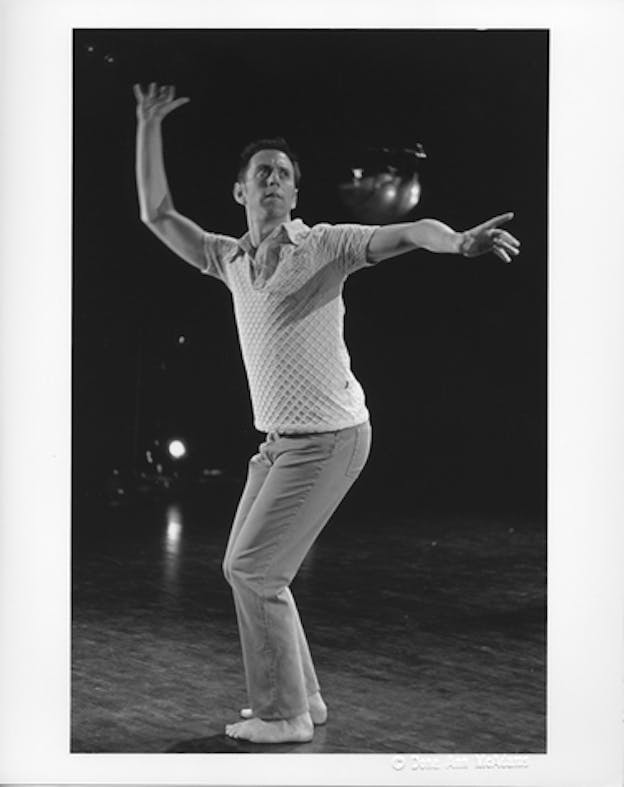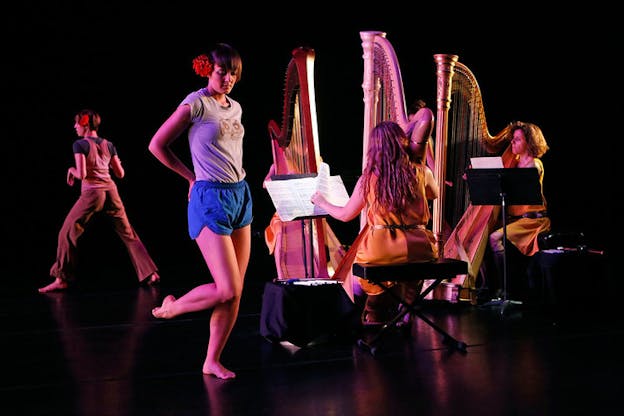Neil Greenberg
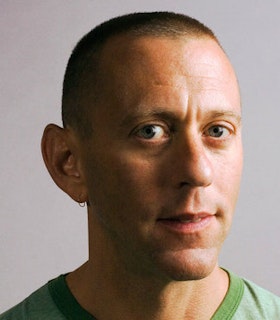
$15,000 was put toward the total expenses for [my company's] 1998 season, leaving $10,000 to be applied toward our upcoming P.S. 122 season… It is in the development period that the grant has really made a difference… I cannot thank the FCPA enough for helping to make this all possible, and for the invaluable vote of confidence.
- Neil Greenberg, March 10, 1999
Artist Statement
I began dancing at a young age, especially for a boy-child in suburban Minnesota in the 1960s. Dance met important needs for me then, and has continued to do so throughout my life. Yes, dance provided me with an outlet for the expression of joy and other emotions, but never merely that. It's also always been an ontological arena, a place of investigation, experimentation, even struggle—a space for living with the question of the body (my body, your body) and the self, for attending to the information living in the body. It's a world unto itself, the potencies of the dancing body, springing (I theorize) from the matrix of experience underlying verbal language, from our first and fundamental perceptions of time, space, body, consciousness, me/you, pleasure/pain—in short, life.
I've been explicitly looking at the question of meaning-making in dance. My use of extra-dance elements figures into this, asking the viewer to hold two or more different media together simultaneously—for example, live dancing and written text—and negotiate the poetics of perhaps not being able to connect them nor separate them, but to nevertheless experience them. Throughout, I proceed from the aesthetic stance of working with 'what is,' which for me includes the real bodies, personal histories, and relationships of the dancers onstage—with each other and with the audience—as well as the relation of these with the cultural/political/social context, the 'what is' outside the studio.
It's curious to me that so many of the works I've created have included text as an extra-dance element (always written text, and usually projected onto the back wall of the performance space). It's even somewhat incongruous, as I'm extremely suspicious that the kind of meaning that language most readily provides is antithetical to the kinds of meaning that most attract me in dance—perceptual, sensual, phenomenological kinds of meaning (a partial list). I've long been troubled by the practice of relating speech metaphors to dance, music, and performance, as in "what is this saying?", finding these to be usually inadequate for describing the potencies and values of any art form. For me, the greatest value that can come from dance often arises from the most abstract aspects of the form. As a result, I'm interested in the move away from representation and toward an experience of the performance moment in and of itself.
I believe in theater's potential to exercise our perceptions, in the process giving us the skills to also experience life outside the theater more fully.
- 2014
Biography
Neil Greenberg has been creating dances since 1979. He came to New York from Minnesota in 1976 and danced with the Merce Cunningham Dance Company from 1979 to 1986. He formed Dance by Neil Greenberg in 1986, and his choreography has since been presented in over twenty New York City productions and on tour. His work Not-About-AIDS-Dance (1994), which employs his signature use of projected words as a layering strategy, complicates the performance moment while also opening doors into potential meanings in the dance. Other projects include Really Queer Dance With Harps (2008), (like a vase) (2010), and This (2014). His FCPA grant supported the production of six works: Part Three (My Fair Lady), Part Three (Judy Garland), Part Three (Luck) at Playhouse 91, Not-About-AIDS-Dance, The Disco Project, and This Is What Happened at Performance Space 122.
Subsequent to receiving his 1997 FCPA grant, he received a National Dance Project Production grant (2004), support from the MAP Fund (2005, 2007), and a Doris Duke Charitable Foundation Creative Exploration Award (2009). Greenberg has created two commissioned works for Mikhail Baryshnikov's White Oak Dance Project and two works for Ricochet Dance Company of London. His works Two, in 2003 and Not-About-AIDS-Dance, in 1994, have twice been cited as among the Ten High Points of the Year in The New York Times. Prior to his 1997 Grants to Artists award, Greenberg received a John Simon Guggenheim Memorial Foundation Fellowship (1992), two New York Dance and Performance "Bessie" Awards (1995, 2005), as well as repeated fellowships from the National Endowment for the Arts (1988-1996), the New York Foundation for the Arts (1990, 1996), and the New York State Council on the Arts (1990-1998).
Greenberg is currently a Professor of Choreography at Eugene Lang College The New School for Liberal Arts, and has previously taught at Purchase College, Sarah Lawrence College, and University of California, Riverside. He served as dance curator at The Kitchen from 1995 to 1999.
